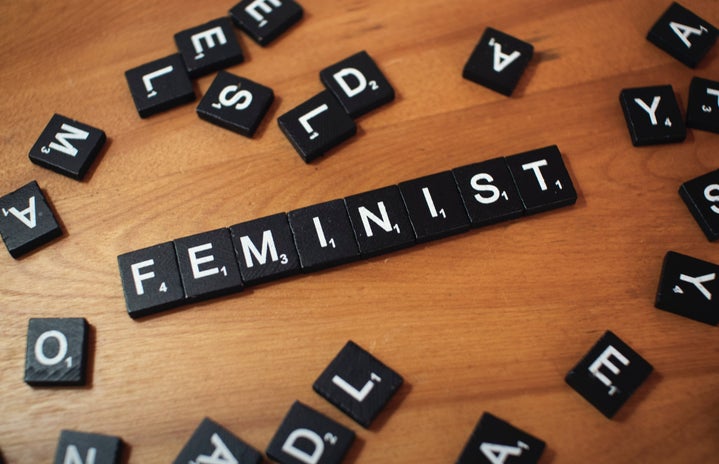“It took me quite a long time to develop a voice, and now that I have it, I am not going to be silent.” -Madeleine Albright
Since before the concept of time, girls all over the world have always been treated and viewed as inferior to men. As women, the main purpose of our existence, since birth, is to grow up and help reproduce the population. We are brainwashed to keep following the harsh rules of our society, and adhering to the standards created for a stereotypical girl with no goal or vision for herself. In the past, many women were not even allowed to read or write or receive the education they so rightly deserve. However, despite all of this, many brave women defied these standards and stereotypes to form their own destiny, which helped pave the way for modern women today like us. We have far more advantages than our mothers, grandmothers and great grandmothers. Unfortunately, we modern girls still have a lot more work to do, so here we are in today’s world continuing legacies built from the strong women of our past.
Malala Yousafzai was born on July 12, 1997, in Mingora, Pakistan. In many Asian countries, the birth of a baby girl is not anything to celebrate. However, her father, Ziauddin Yousafzai, went to great lengths to ensure that his daughter had all of the opportunities that she would have had if she were his son; he was a teacher in an all-girls’ school. Malala loved to learn, but everything changed when the extremist group, the Taliban, took over her town. This group banned everything from music to television, including education for girls and anyone who dared to defy their orders would receive the harshest of all punishments. 15-year-old brave Malala became one of the people to speak out against their rules on behalf of her fellow classmates. Because she spoke out, she became their target and that’s when it happened. She was on a school bus with her friends and a masked gunman entered the bus yelling “Who is Malala?” and there flew a bullet into Malala’s head. This could have killed her right then and there but instead, she woke up in a hospital in England and was told that the entire world was praying for her recovery. This gave her the motivation to do hard work in rehab to be able to recover as much as possible from the damage that the Taliban did to her. Instead of letting her trauma win, Malala continued advocating for girls’ rights to education. At the age of 17, Malala Yousafzai became the youngest person in the world to receive the Nobel Peace Prize. What I love about this story is the irony of it; the Taliban did not want girls to be educated. They are so afraid of a girl’s mind that they shot her right in the head. Despite a bullet to the head, Malala perseveres through the major lows of her experience and still proves the Taliban wrong, because all girls deserve to get an education.
Emma Gonzalez is the next heroine of our story. Emma was in her senior year of high school. She was the president of the Gay-Straight Alliance Club. She was also the tracking team leader of Project Aquila. However, in February 2018, instead of worrying about what she will wear to prom, she was worried about whether she will live another day or not when one of her own classmates brought a gun to school and killed 17 people while heavily injuring others. Three days after the catastrophic event, she gave an eleven-minute speech at a gun rally and held a six-minute moment of silence (which was the length of the shooting spree) for the lives that were lost in this event. Her speech has made the gun control movement stronger than ever. She has been a gun control advocate ever since and has inspired many others.
Sonita Alizadeh is another remarkable female activist. She was born in Herat, Afghanistan under the rule of the Taliban. Her family had considered selling her as a bride at the age of 10 years. At the time, she obviously had no idea what that fully meant. Thankfully, her family made the decision to move to Iran instead. As she grew up, Sonita’s job became cleaning bathrooms, while she eventually taught herself to read and write. She also discovered Iranian rapper, Yas, and American rapper Eminem. Inspiration hit and soon, she began writing songs of her own. After entering a US competition to get Afghan people to vote, she won a $1000 dollar prize which she gave to her mother who had moved back to Afghanistan. Her mother told her to come back home, saying she had found a man who was willing to buy her at the age of 16. She was trying to earn a higher dowry so that Sonita’s older brother could purchase a wife. Luckily, the director of Sonita’s future documentary, Sonita, paid her $2000 to work with him and film a music video for her song, “Brides For Sale.” This video grew attention not just by the women in Afghanistan, but also a nonprofit organization that helped Sonita move to the states.
Next, we have Melina Laboucan-Massimo, who was born in northern Alberta Canada in a small town known as Peace River. She is Lubicon Cree, one of Canada’s Indigenous tribes. She was raised with tribal traditions and lived this lifestyle to its fullest by hunting, using plants as medicine, exploring local forests, etc. Her studies in college focused on Indigenous rights and resource extraction. With Greenpeace Canada, Melina has worked as an environmental activist, inspiring others to learn more about Indigenous cultures and the importance of the environment around us.
As you can see, there are many strong women who use the advantages that they have gained from female activists of the past to continue fighting for more rights all over the world. The stories of these brave young women inspire all of us to never settle for less than what we deserve. They inspire us to be courageous, to stand up for what we believe in, and to never ever back down from a fight. Growing up we have learned about Rosa Parks, Susan B. Anthony, and Elizabeth Cady Stanton. Now we see Malala Yousafzai, Emma Gonzalez, Sonita Alizadeh, and Melina Laboucan-Massimo. In each new generation, we will continue to have iconic female activists who will keep fighting for equality. It is beautiful to see proof of that in the world we live in today.



